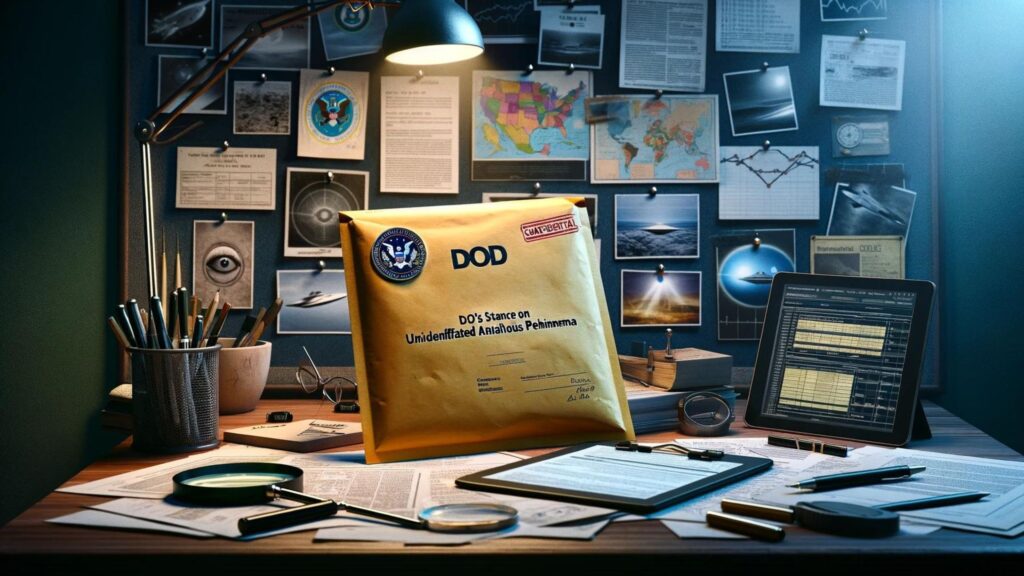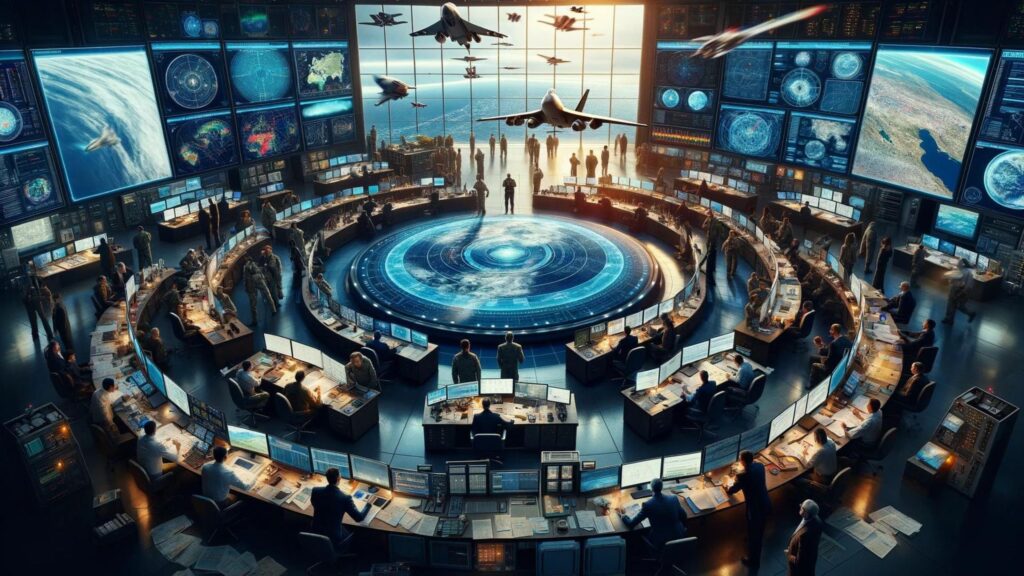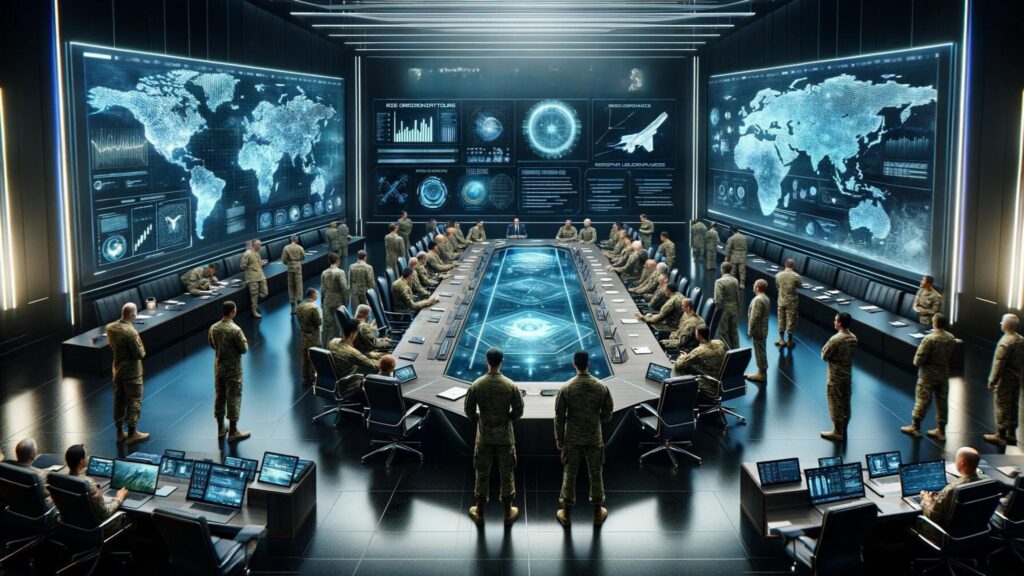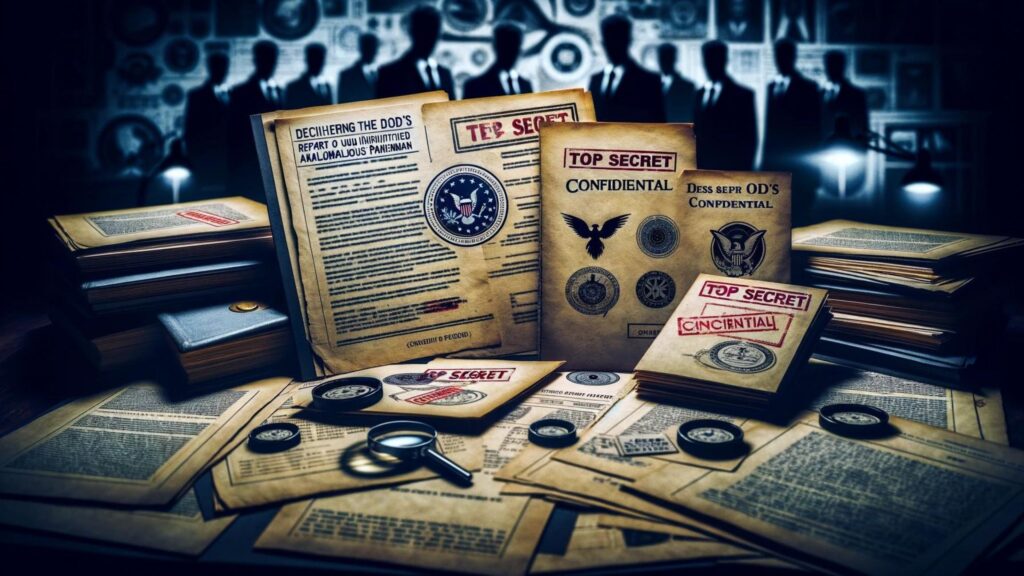Introduction
In the ever-evolving landscape of national security and aerial mysteries, the Department of Defense (DoD) has taken a significant step in demystifying Unidentified Anomalous Phenomena (UAP). The DoD Inspector General’s comprehensive report illuminates the current stance and challenges faced by the DoD in handling these enigmatic occurrences. From the lack of a unified policy and coordination to the need for standardized data collection and enhanced collaboration, this critical evaluation delves into the intricacies of UAPs and their implications on national security and public perception. Join us as we unravel the key findings, recommendations, and future implications of this pivotal report, offering a clear-eyed view of the DoD’s journey toward understanding and addressing the mysteries of the skies.
Unveiling the DoD’s Stance on Unidentified Anomalous Phenomena: A Critical Evaluation

In a world increasingly intrigued by the unknown, the Department of Defense Inspector General’s recent report on Unidentified Anomalous Phenomena (UAP) throws a spotlight on the DoD’s approach to these mysteries. The report underscores the need for a cohesive strategy, pointing out significant gaps in policy, data handling, and security measures.
Key Takeaways
- The DoD’s fragmented approach to UAPs hampers effective response and understanding.
- The absence of a unified policy impedes national security and flight safety efforts.
- Standardized data collection is critical for comprehensive UAP analysis.
- Enhanced collaboration with external experts could significantly advance UAP research.
- Improving training and increasing transparency are key to addressing UAP-related challenges.
- Report Overview: The DoD Inspector General’s Office released a report evaluating how the Department of Defense (DoD) has handled Unidentified Aerial Phenomena (UAP), also known as UFOs. This evaluation began in May 2021, with a classified report published in August of the same year. The public received an unclassified summary later.
- Investigation Process: John Greenewald, Jr. delved into the details of the report through Freedom of Information Act (FOIA) requests and interviews. He examined the report’s development, including the drafting process, internal reviews, and the final response. The report involved various DoD divisions and agencies, providing insight into the depth and scope of the investigation.
- Key Findings: The report revealed that the DoD had not established uniform policies or procedures for dealing with UAPs. It also addressed inaccuracies in a 2017 New York Times article about UAP and highlighted the DoD’s failure to effectively communicate about its UAP-related programs.
- Recommendations: The Inspector General made several recommendations, including the need for the Undersecretary of Defense for Intelligence and Security, in coordination with other offices, to develop comprehensive UAP policies and procedures. This would involve integrating UAP roles, responsibilities, and coordination procedures into existing frameworks.
- Public Response and Implications: Greenewald noted that while the report provided valuable research leads and insights for further investigation, it offered little new information to the general public. He emphasized the importance of continued inquiry and transparency in understanding the DoD’s approach to UAPs and urged public sharing and support for further research in this area.
The Challenge of Coordination in UAP Evaluation

The Department of Defense faces a daunting task: ensuring a coordinated approach to Unidentified Anomalous Phenomena. Currently, the lack of a comprehensive strategy across various branches leads to inconsistent reporting and analysis. This fragmentation not only makes it challenging to draw meaningful conclusions but also impacts the efficacy of response measures.
Policy Gaps and National Security Implications
A glaring issue in the DoD’s current UAP framework is the absence of an overarching policy. This gap creates vulnerabilities in national security and flight safety, as it hinders the DoD’s ability to identify and mitigate potential threats effectively.
Data Standardization: A Key to Understanding UAPs
The report highlights the pivotal role of standardized data collection in understanding UAPs. Inconsistent data quality and accessibility across different branches hamper the ability to analyze UAP incidents comprehensively. Implementing uniform data collection methods would greatly enhance the understanding of these phenomena.
Missed Opportunities in UAP Research
The DoD has yet to fully leverage available data and expertise in its UAP research. Collaborating with external scientific and technical communities could yield significant advancements in understanding and analyzing UAPs.
Addressing Security Risks in UAP Encounters
The current uncoordinated response to UAPs poses significant security risks. Pilots and operational units are potentially exposed to unnecessary risks when encountering UAPs due to unclear reporting procedures. Enhancing training and establishing clear protocols are essential steps towards mitigating these risks.
Moving Forward: Recommendations for the DoD

The DoD OIG report sets forth several key recommendations to enhance the DoD’s approach to UAPs. These include the development of a clear and unified UAP policy, standardization of data collection procedures, and improved collaboration with external experts. These steps are crucial to ensure a more comprehensive understanding of UAPs and to prepare for potential national security threats.
Enhancing National Security through UAP Understanding
The need for a deeper understanding of UAPs is not just about satisfying curiosity; it’s a matter of national security. By demystifying UAPs, the DoD can better assess potential threats and safeguard national airspace.
The Role of Technology in UAP Research
Advancements in technology can play a pivotal role in UAP research. From improved sensors to advanced data analytics, leveraging cutting-edge technology is essential for the accurate detection, tracking, and analysis of UAPs.
Public Perception and UAPs
Public interest in UAPs has always been high. How the DoD handles UAP reports and communicates its findings can significantly influence public perception and trust in government transparency.
Global Perspectives on UAPs
Understanding how other nations approach UAPs can provide valuable insights for the DoD. International collaboration and information sharing could be key to developing a more comprehensive understanding of these phenomena.
The Future of UAP Research and Policy
Looking ahead, the evolution of UAP research and policy will likely be shaped by both emerging scientific evidence and public discourse. The DoD’s actions in response to the UAP report will set a precedent for future research and policy-making in this intriguing field.
FAQs Section

Why is a Unified Policy on UAPs Important for the DoD?
A unified policy is essential for the DoD to ensure consistency, efficiency, and comprehensive data analysis. It standardizes the approach across different branches, facilitating better threat assessments and public trust in the DoD’s commitment to addressing UAPs.
How Can Standardizing Data Collection Improve Our Understanding of UAPs?
Standardizing data collection is pivotal for ensuring data accuracy and reliability. It allows for effective comparative analysis across different sources, enabling the identification of patterns and trends in UAP incidents. Moreover, it supports advanced analytical methods, leading to deeper insights into these phenomena.
What Roles Can External Experts Play in UAP Research?
External experts bring invaluable expertise and perspectives to UAP research. Their involvement can lead to innovative approaches and enhanced scientific rigor in the study of UAPs. Collaboration with these experts facilitates comprehensive data analysis and hypothesis testing, contributing to a more robust understanding of UAPs.
What are the Security Risks Associated with Uncoordinated UAP Responses?
Uncoordinated responses to UAPs can lead to incomplete threat assessments and delayed reactions, putting personnel and assets at risk. Inconsistencies in reporting and analysis may also create information gaps, increasing vulnerabilities. A unified approach and standardized protocols are necessary to address these security challenges effectively.
Conclusion
The Department of Defense Inspector General’s report on UAPs marks a critical step in addressing the complexities associated with these phenomena. By adopting the report’s recommendations, the DoD can enhance its understanding of UAPs and ensure better preparedness for potential national security threats. It’s a journey towards demystifying the unknown, backed by a more cohesive and informed strategy.
For more insights into the intriguing debate on whether UFOs are intergalactic or interdimensional, explore our detailed analysis in ‘Unraveling the Cosmic Mystery’ at Atmospheric Lights.”
